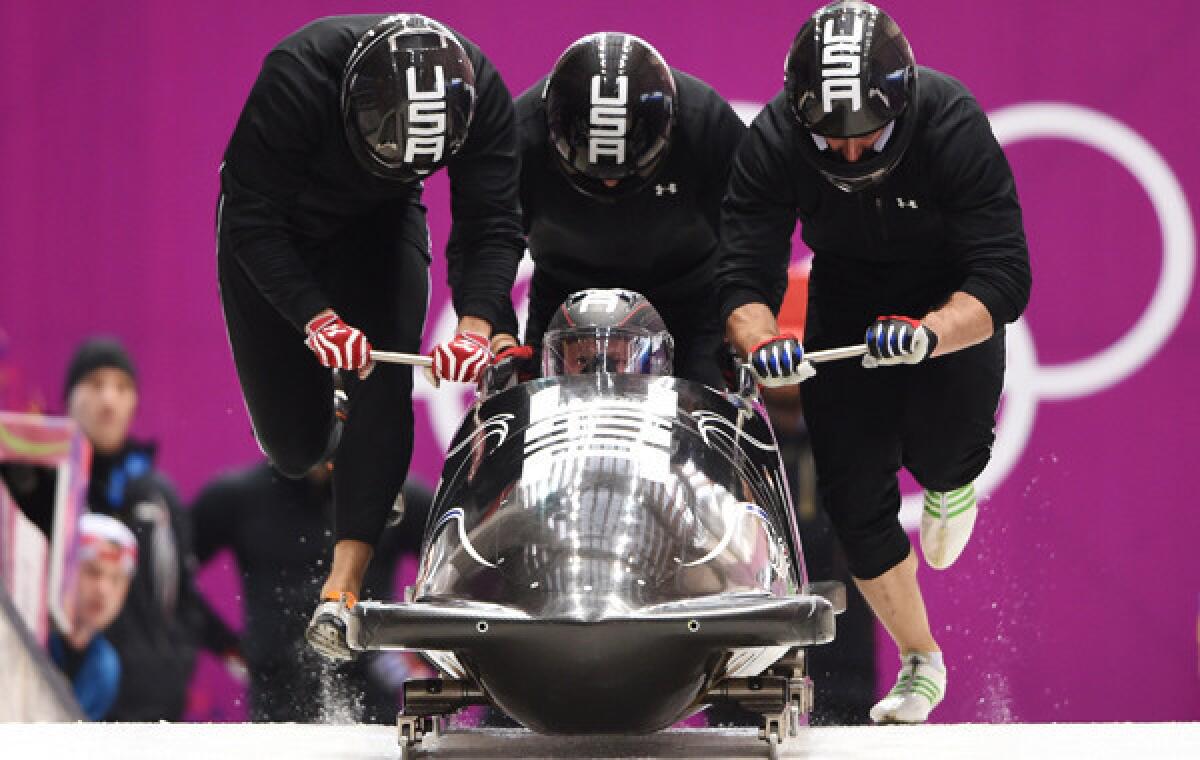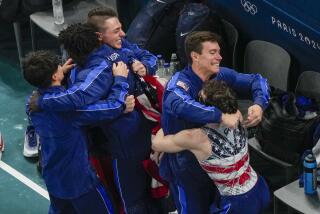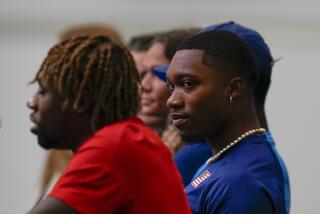Sochi Olympics: Hobbled Steven Holcomb is best U.S. hope in bobsled

- Share via
SOCHI, Russia — It’s all going to come down to Steven Holcomb’s left calf.
The United States hopes to make history in the four-man bobsled this weekend, but it needs Holcomb to fully recover from the calf strain he suffered during the two-man event Sunday for that to happen. If he’s hobbled, the chances diminish greatly for him to become the first American driver to win successive Olympic titles in 82 years.
“There are a lot of treatment options I can do, but they’re all illegal,” said Holcomb, who won gold in Vancouver four years ago. “I’m sticking to acupuncture, massage and laser stuff to help increase blood flow.... On race day my adrenaline will be going, I’ll put in my mouthpiece, bite down hard and dig deep.”
The event’s first two runs are slated for Saturday, with the final two runs taking place shortly before the closing ceremony on Sunday.
Russia’s Alexander Zubkov — who won the two-man competition this week — has doubts about Holcomb’s ability to recover in time. Though Holcomb is the world’s top-rated driver, the U.S. team will suffer if he’s not at full strength to help push the sled from the start line.
“I think it will be hard for him to stand a chance,” Zubkov said. “But I know he could overcome it and he will try hard.”
Zubkov, whose four-man crew finished second at the world championships last year, became the medal favorite in this event after four clean runs during the two-man event. Although other drivers are still trying to figure out the Sanki Sliding Center track, his familiarity with the course gives him a clear home-ice advantage.
His competitors estimate Zubkov has taken 300 training runs on the track, which has 17 curves and three rare uphill sections. The other drivers — who have had about 40 runs here over the last two years — have taken to studying his efforts in order to determine how to best handle the course.
“Zubkov really knows the lines,” Holcomb said. “I can learn if he’s making mistakes by watching him. After the two-man we know he is super-fast, but all season he hasn’t done that great. Somehow he’s crushing everyone at the Olympics.”
Holcomb’s four-man crew includes Chris Fogt, Curt Tomasevicz and Steve Langton. Tomasevicz helped push USA 1 to gold four years ago, and Langton won the bronze with him Monday in the two-man event.
“I had a great time over the last [few] days,” Langton said. “Obviously, crossing the finish line and seeing my teammates, collecting my first Olympic medal, it was amazing. The best part is that we still have another shot.”
Holcomb won in Vancouver driving the Night Train, a name given to his sled because of its black varnished exterior. He will be driving the Night Train 2, which was developed by the Bo-Dyn Bobsled Project, this weekend.
The original Night Train — which also was built by Bo-Dyn — has been handed down to pilot Nick Cunningham, who will be driving USA2 on Saturday.
“The first time I sat in it I just paused for a second because everything [Holcomb] has done to be the best in the world has happened in that sled. You take that pride and it makes me work harder,” Cunningham said. “When I know the sled is the best in the world then, boom, it takes a big headache off. If I am slow I don’t have to question my equipment, I can narrow it down. It’s either going to be the sled, the push or my driving — and I already know the sled is fast.”
Twitter: @stacystclair
More to Read
Go beyond the scoreboard
Get the latest on L.A.'s teams in the daily Sports Report newsletter.
You may occasionally receive promotional content from the Los Angeles Times.










